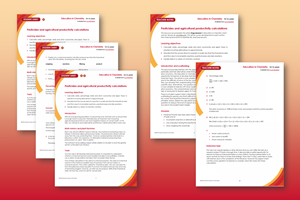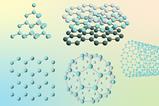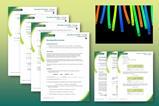Provide context while developing learners’ mathematical skills
This resource accompanies the article Bugs beware in Education in Chemistry, which covers developments in pest control, from insect pheromones to essential oils, and food security.
Learning objectives
- Calculate yields, percentage yields and atom economies and apply these to reactions involving alternatives to agrochemicals.
- Describe that the actual yield of a reaction is usually less than the theoretical yield and this is due to incomplete reactions, practical losses and side reactions.
- Handle data in a variety of chemistry contexts.
How to use this resource
This resource provides learners with the opportunity to understand more about pesticides and their alternatives while linking this to yield, percentage yield and atom economy. The Education in Chemistry article is a great opportunity for learners to develop their literacy skills and read around an incredibly important topic. The article is more suitable for learners with a higher reading age due to the difficulty of some of the key words. Provide learners with the full article so they can develop their understanding of the topic and experience reading more scientific texts. Alternatively, the question sheet itself explains the key concepts and is more suitable for learners with lower reading ages. The content covers yield and atom economy. The comprehension and calculations would work well as a revision task or homework for learners aged 14–16 and as a starter task for 16–18 year-olds. Find the answers in the teacher notes.
More resources
- Improve learners’ data handling with a worksheet to provide support, including number lines and fill-in-the-blank questions, when rounding and calculating significant figures in chemistry.
- Link your teaching of pesticides and agricultural productivity to careers with Emma’s job profile as a pollution control officer.
- Use the resource accompanying the 7 simple rules: reduce cognitive load to build knowledge article for ideas on modelling worked examples and fading scaffolding.
- Review moles, yields, atom economy and titrations with your 16–18 year-old learners using the Starter for 10: quantitative chemistry.
Scaffolding
There is a student support sheet, indicated by a single star in the header, to provide scaffolding for learners who find it difficult to lay out the calculations and remember key words. Download the interactive support sheet with cloze questions or the printable version. Delete the calculation prompts or key words for the fill-in-the-gaps questions to reduce the level of support as appropriate. The unscaffolded sheet has two stars in the student sheet header.
Downloads
Pesticides and agricultural productivity calculations – interactive student support sheet
Editable handout | Word, Size 0.44 mbPesticides and agricultural productivity calculations – student support sheet
Handout | PDF, Size 0.25 mbPesticides and agricultural productivity calculations – student support sheet
Editable handout | Word, Size 0.44 mbPesticides and agricultural productivity calculations – student sheet
Handout | PDF, Size 0.24 mbPesticides and agricultural productivity calculations – student sheet
Editable handout | Word, Size 0.44 mbPesticides and agricultural productivity calculations – teacher notes
Handout | PDF, Size 0.2 mbPesticides and agricultural productivity calculations – teacher notes
Editable handout | Word, Size 0.42 mb
























No comments yet